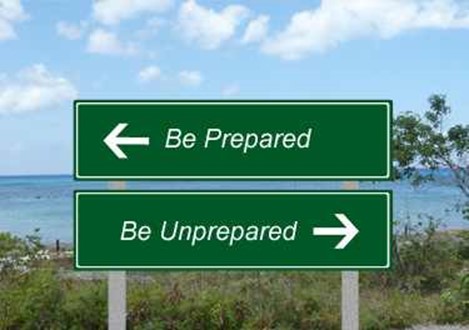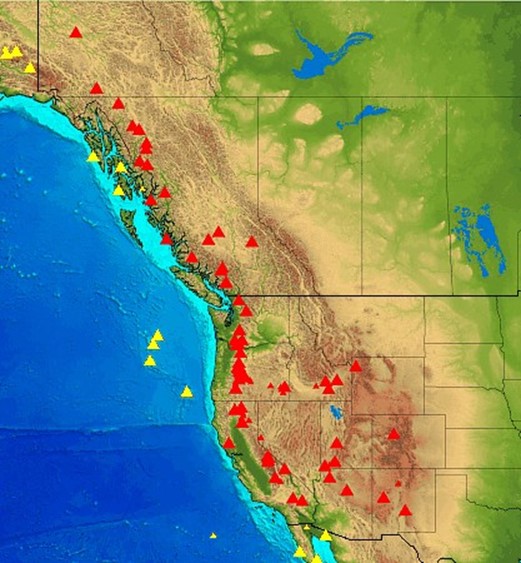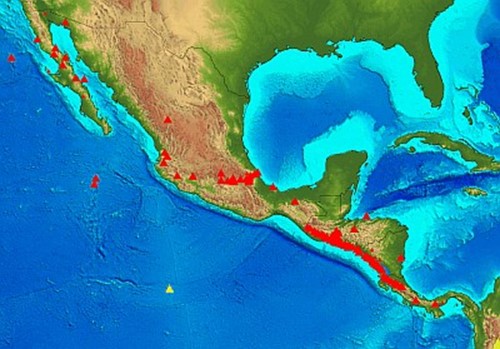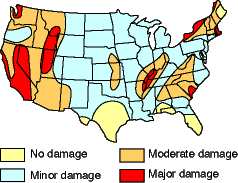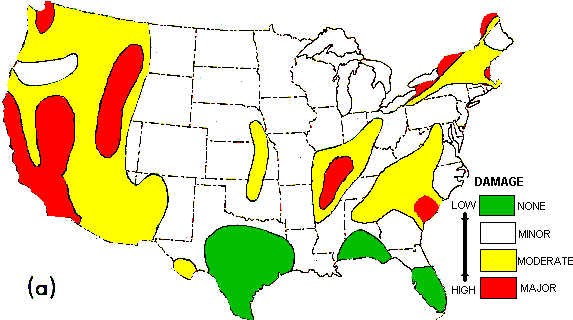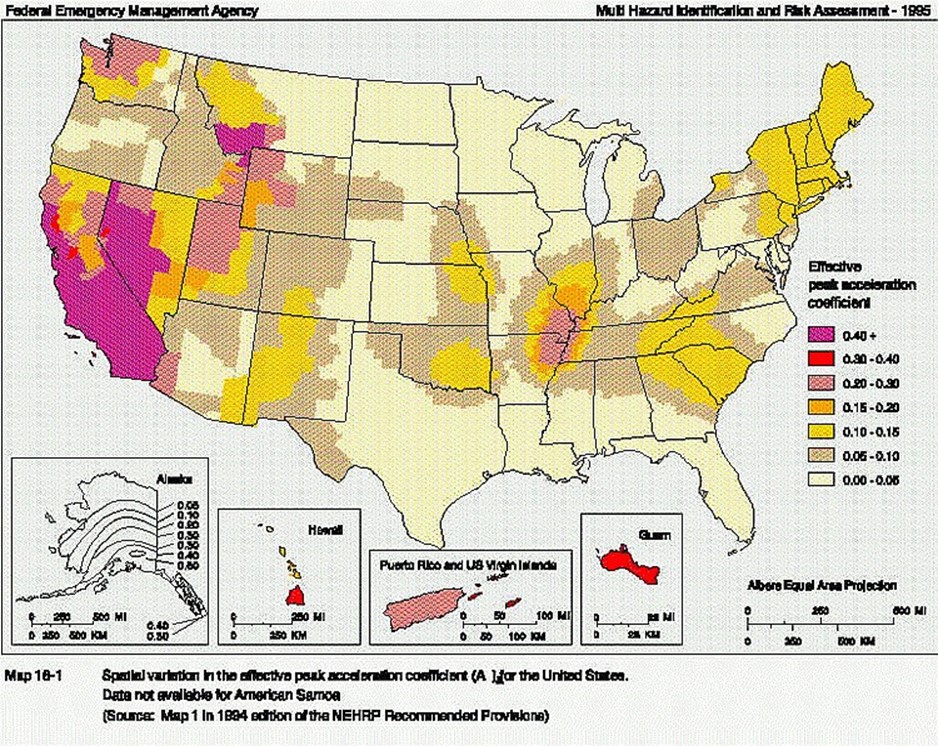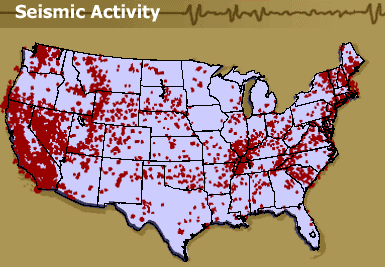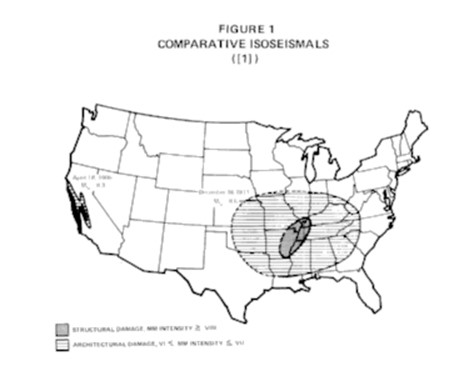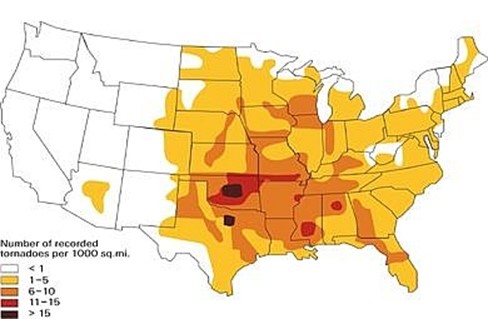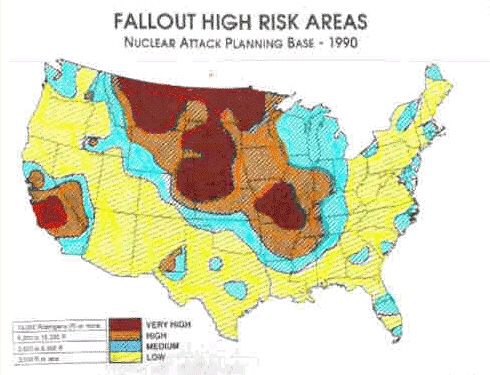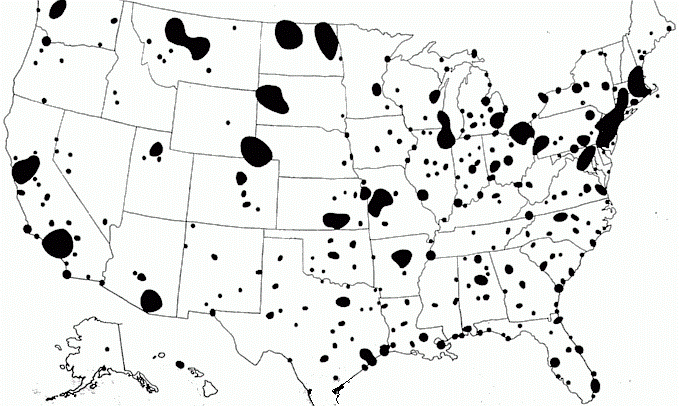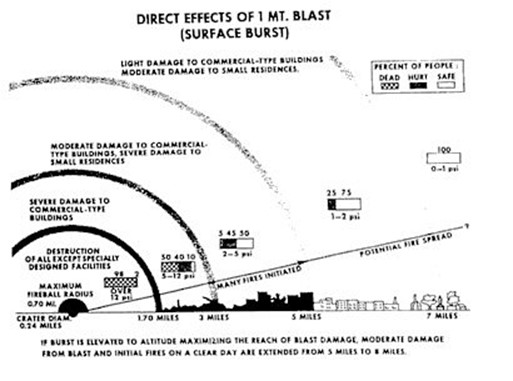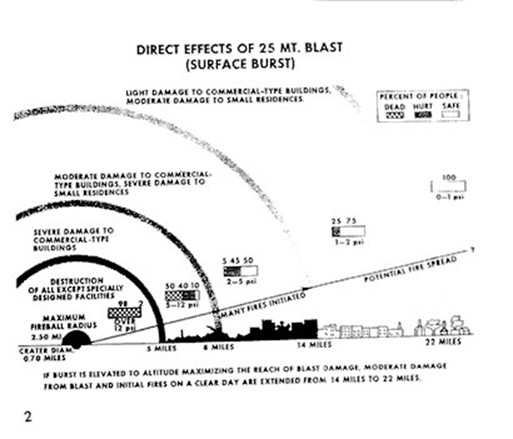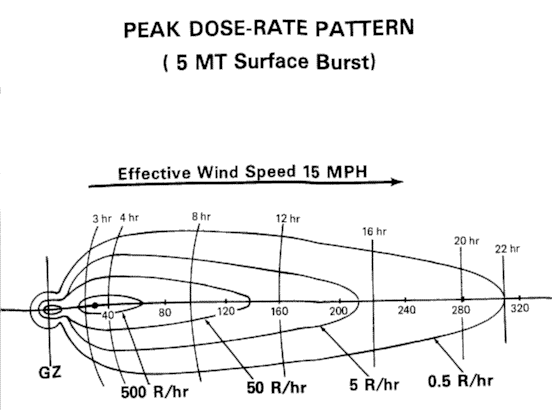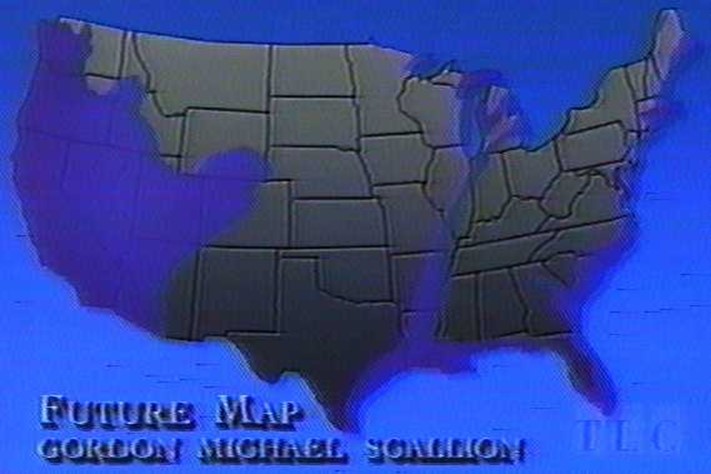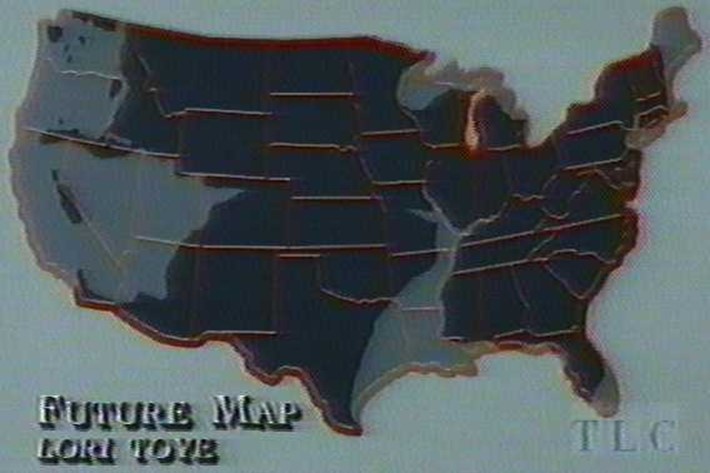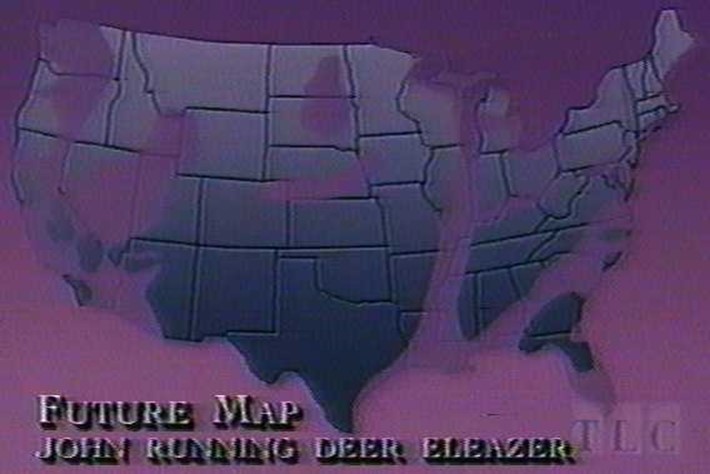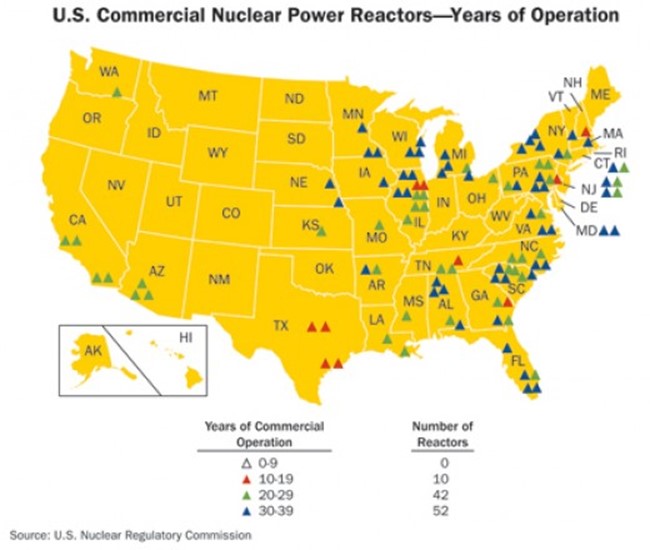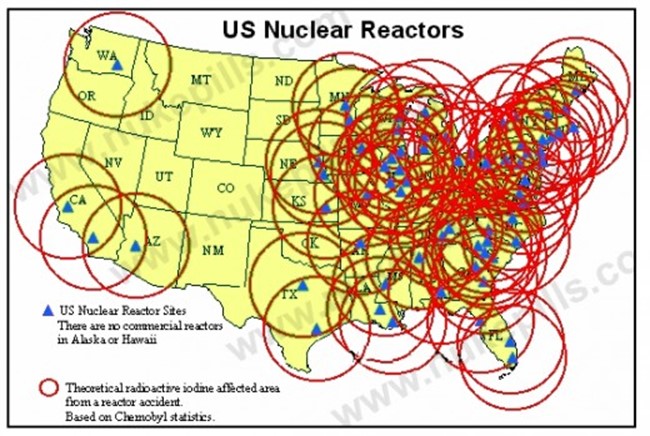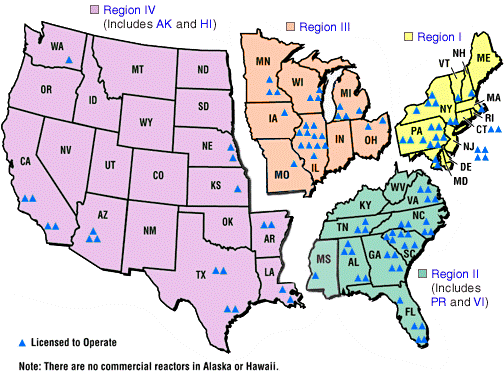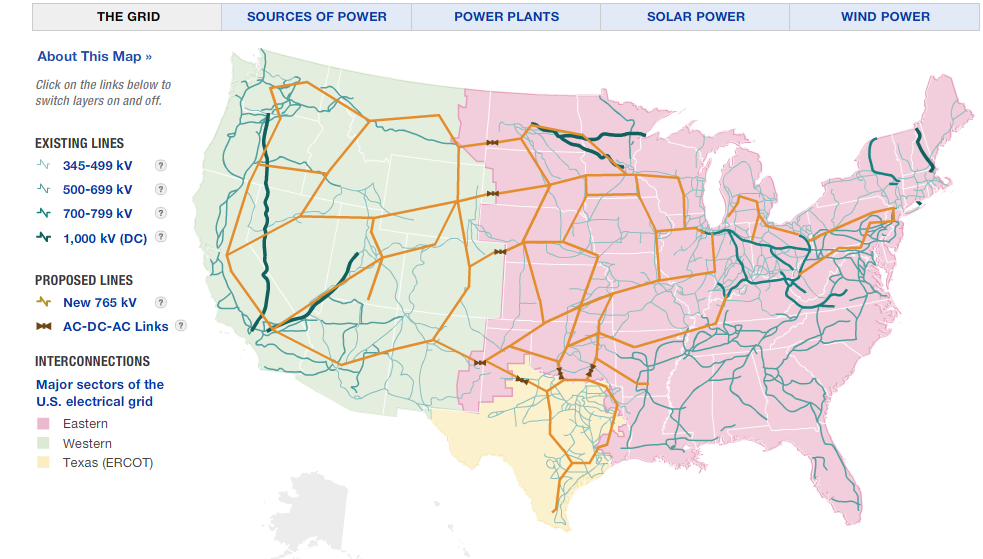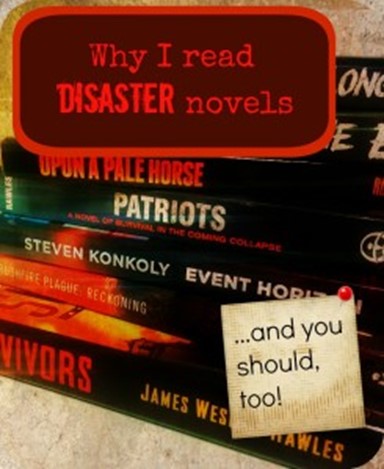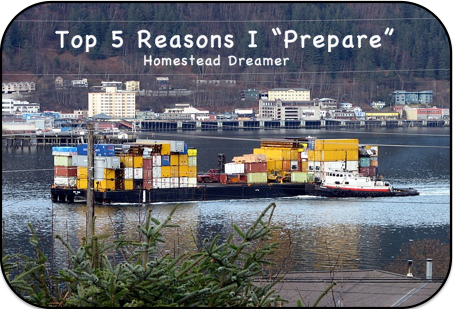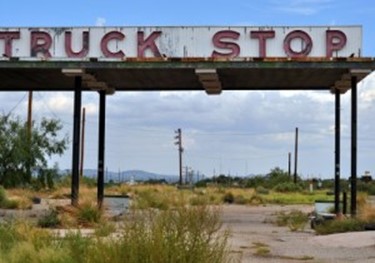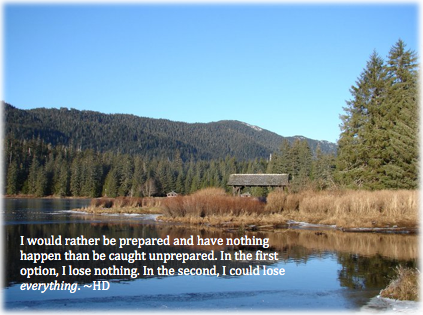Guest post by Posted by Rob Richardson
As I learned from working in the areas ravaged by Hurricanes Katrina, Rita, Gustav, and several others, cell phones and land-line telephones are basically useless. It became obvious very quickly that I could not call home from most areas due to the telephone lines and cell towers being “down” or busy. Fortunately, I was prepared by having a 2-meter, a 10-meter (both now replaced with a HF/VHF/UHF all band radio), a Citizens Band (CB) radio, and a Uniden Bearcat Scanner which all were mounted in my truck! The scanner allowed me to hear law enforcement and other agencies that were responding to and working the disaster.
The 2-Meter radio allowed me to contact local authorities and also to monitor rescue and recovery efforts and to plan which routes and areas to work in due to massive damage and debris everywhere. The CB allowed me to contact truckers and their fantastic network of highway/roadway information! With the 10-Meter radio I was able to make contacts that could get in touch with my family which were several hundred miles away and safely at home!
I use frequencies from five (5) different areas of the radio spectrum to aid in my travels, for safety, obtaining information, and in communication with others. The areas were: NOAA Weather Radio, CB (both AM and SSB), FRS/GMRS, VHF Maritime, and most importantly Amateur Radio (Ham Radio).
You do not need a license to monitor or listen to any of the frequencies provided in this article. However, you will need a license to talk on some of the frequencies listed. I will start with “free-talk” frequencies or the ones where no license is needed.
NOAA Weather Radio
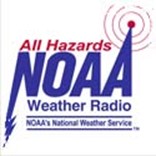
NOAA broadcasts are tailored to specific areas and give specific information to fit the needs of people in the listening area of each NOAA transmitter. There are currently over 425 transmitters in the United States, Puerto Rico, the US Virgin Islands, Guam, and Saipan. Canada has its own weather alert system and can be researched on the Internet. Each transmitter covers a range of approximately 40 miles from the transmitter site. Currently over 80% of the country is covered by NOAA broadcasts. This 80% encompasses up to 95 % of the population!
In the United States most NOAA broadcasts are heard 24-hours a day with the weather forecasts being updated as needed. Special hazards and other warnings are broadcast as needed. Broadcasts have evolved to a point where most weather radios have “Specific Area Message Encoding” or S.A.M.E. which allows the user to program only the areas they wish to monitor or hear affected by the broadcasts when receiving weather or other hazard warnings.
In times of severe weather in some areas, local Ham radio operators or Skywarn Hams call in on specific radio frequencies and update the local NOAA office with weather reports from their location. If monitoring the Sky Warn frequencies you will get advanced notice of any hazardous weather in your area! NOAA operates on seven (7) frequencies outside of the normal AM/FM radio bands. No licensing is required to own a NOAA Weather radio or to monitor their transmissions. They are listed below:
Frequency
| 162.4000 MHz |
|
162.4250 MHz |
| 162.4500 MHz |
162.4750 MHz |
| 162.5000 MHz |
162.5250 MHz |
|
162.550 MHz |
|
I monitor the NOAA frequencies with my Ham radio equipment and have gained very useful information in times of severe weather. If you purchase a NOAA Weather Radio, these frequencies are pre-programmed allowing the end-user to turn it on and start receiving broadcasts!
Citizens Band Radio (CB)
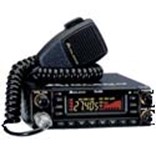
If you did not sleep through the entire 1970’s and 80’s you most likely have heard of and probably once owned or knew someone with a CB radio! They gained immense popularity with the truckers and then with almost everyone else at some point in the past. Since 1977 they all have 40-channels. Some come with single-side band (SSB). Others have the NOAA channels and some even have Blue Tooth capability. The radios that have SSB supply 120 separate channels to use in your communication: 40 AM, 40 USB (upper side-band), and 40 LSB (lower side-band).
The United States and Canada have a tremendous amount of over-the-road truckers and most of them utilize CB radio! When listening to or talking with them you will learn the location of weather hazards, mobile law enforcement, roadway obstructions, traffic jams, accidents, hazardous drivers, good food, rest areas, and much, much more! (A lot of the older Hams cringe at the thought of CB radio, but the information and safety advantages they provide greatly outweigh their prejudices against the CB and its operators! By the way, I’m an Amateur Extra Class Ham and a CB’er!) CB’s utilizes specific channelized frequencies from 26.965 MHz to 27.405 MHz. Truckers primarily use Channel 19 (27.1850 MHz) for their communications nation-wide with Channel 9 (27.0650 MHz) being the recognized Emergency Channel. CB’s are used by many 4X4 clubs, hunting clubs, RVer’s, and boating clubs! Currently you do not need a license to operate on any CB frequency in the United States.
The transmission range of a CB varies greatly with the type antenna, atmosphere, channel, number of other transmissions taking place, terrain, and solar activity. Most mobile to mobile transmission will be between your location and up to 10 miles out. Some periods may allow “skip” or “DX” to occur resulting in transmission over 100 miles and up to a thousand mile or more! However, talking “skip” is illegal under the FCC rules for CB use. Power is restricted to 4-watts on AM and 12-watts on SSB. A CB frequency chart is below:
CB CHANNEL INFORMATION
| CB Channel |
Frequency |
Frequency Use |
| Channel 1 |
26.965 MHz |
|
| Channel 2 |
26.975 MHz |
|
| Channel 3 |
26.985 MHz |
Prepper CB Network (AM) |
| Channel 4 |
27.005 MHz |
Used by many 4X4 clubs, The American Pepper’s Network (TAPRN.) |
| Channel 5 |
27.015 MHz |
|
| Channel 6 |
27.025 MHz |
Many operators using illegal linears. |
| Channel 7 |
27.035 MHz |
|
| Channel 8 |
27.055 MHz |
|
| Channel 9 |
27.065 MHz |
Universal C.B. Emergency / REACT Channel. |
| Channel 10 |
27.075 MHz |
|
| Channel 11 |
27.085 MHz |
Local calling channel |
| Channel 12 |
27.105 MHz |
|
| Channel 13 |
27.115 MHz |
Often used in some areas for marine, RV’s, and campers |
| Channel 14 |
27.125 MHz |
FCMA (Federal Motor Coach Assoc) heard here |
| Channel 15 |
27.135 MHz |
Used by truckers in CA |
| Channel 16 |
27.155 MHz |
Used by many 4X4 clubs. |
| Channel 17 |
27.165 MHz |
Used by truckers on the east-west roads in CA. |
| Channel 18 |
27.175 MHz |
|
| Channel 19 |
27.185 MHz |
Unofficial main” Trucker” channel |
| Channel 20 |
27.205 MHz |
|
| Channel 21 |
27.215 MHz |
Used by truckers for N/S routes in CA and some other areas. |
| Channel 22 |
27.225 MHz |
|
| Channel 23 |
27.255 MHz |
|
| Channel 24 |
27.235 MHz |
|
| Channel 25 |
27.245 MHz |
|
| Channel 26 |
27.265 MHz |
|
| Channel 27 |
27.275 MHz |
|
| Channel 28 |
27.285 MHz |
|
| Channel 29 |
27.295 MHz |
|
| Channel 30 |
27.305 MHz |
Channels 30 and up are often used for SSB. |
| Channel 31 |
27.315 MHz |
|
| Channel 32 |
27.325 MHz |
|
| Channel 33 |
27.335 MHz |
|
| Channel 34 |
27.345 MHz |
|
| Channel 35 |
27.355 MHz |
Australian calling channel |
| Channel 36 |
27.365 MHz |
Unofficial USB calling channel |
| Channel 37 |
27.375 MHz |
Prepper 37 (USB) |
| Channel 38 |
27.385 MHz |
Unofficial LSB calling channel |
| Channel 39 |
27.395 MHz |
SSB |
| Channel 40 |
27.405 MHz |
SSB |
Since I’m the only Ham radio operator in our family, we have a set CB channel and an alternate channel to meet on if an emergency or crisis arises! It should be noted that even though there are 40 channels on the CB, only one is set aside for any group and that is Channel 9 (Emergency / React Channel) as mentioned above. Anyone can talk on any other CB channel anytime, anywhere in the United States day or night!
A lot of people have CB’s that have been modified for “Freeband Operation.” Freeband is operating below Channel 1 and above Channel 40 on the CB band. In addition, there are frequencies between each CB channel that are utilized in “freebanding.” Frequency 27.555 MHz (USB is the freeband calling channel. I keep the Freeband frequencies programmed into my scanner and sometimes hear some interesting conversations.
Survivalist and Prepper CB and Freeband Frequencies
| Frequency |
USE |
| CB 3(AM) 26.9850MHz |
Pepper’s |
| CB 36(USB) 27.3650MHz |
Survivalist |
| CB 37(USB) 27.3750MHz |
Prepper CB Network(AM) |
| Freeband(USB) 27.3680MHz |
Survivalist Network |
| Freeband(USB) 27.3780MHz |
Prepper Network |
| Freeband(USB) 27.4250MHz |
Survivalist Network |
FRS / GMRS
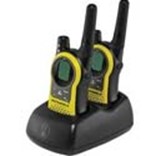
The FRS or Family Radio Service was adopted in 1996 for use by families. Since then, many businesses use the FRS to aid in their daily communications. The FRS utilizes improved walkie-talkies and is allotted frequencies that are channelized. The FRS and GMRS use UHF or ultra-high frequency. Many FRS / GMRS radios come with sub-audible squelch codes (CTCSS and DCS). This allows the user to squelch out many undesirable transmissions and conserve battery life.
There are 22 FRS / GMRS channels. Channels 1 – 7 are shared with the GMRS. Channels 8 – 14 are for FRS only. Channels 15 – 22 are for GMRS only. It should be noted that the FRS does not require licensing where the GMRS requires an FCC license. The FRS radios are restricted to ½ watt (500-milliwatts) and must have a fixed antenna. The range of a typical FRS radio is typically ¼ mile out to approximately 1 ½ miles, sometimes maybe further depending upon the terrain and other factors. GMRS radios may use up to 5-watts of power and offer better range. A list of frequencies for the FRS / GMRS is below:
FRS/GMRS Frequencies
| Channel |
Use
|
Frequency (MHz)
|
|
Channel
|
Use
|
Frequency (MHz)
|
| 1 |
FRS/GMRS
|
462.5625
|
|
12
|
FRS
|
467.6625
|
| 2 |
FRS/GMRS
|
462.5875
|
|
13
|
FRS
|
467.6875
|
| 3 |
FRS/GMRS
|
462.6125
|
|
14
|
FRS
|
467.7125
|
| 4 |
FRS/GMRS
|
462.6375
|
|
15
|
GMRS
|
462.5500
|
| 5 |
FRS/GMRS
|
462.6625
|
|
16
|
GMRS
|
462.5750
|
| 6 |
FRS/GMRS
|
462.6875
|
|
17
|
GMRS
|
462.6000
|
| 7 |
FRS/GMRS
|
462.7125
|
|
18
|
GMRS
|
462.6250
|
| 8 |
FRS
|
467.5625
|
|
19
|
GMRS
|
462.6500
|
| 9 |
FRS
|
467.5875
|
|
20
|
GMRS
|
462.6750
|
| 10 |
FRS
|
467.6125
|
|
21
|
GMRS
|
462.7000
|
| 11 |
FRS
|
467.6375
|
|
22
|
GMRS
|
462.7250
|
Amateur (HAM) Radio
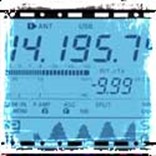
Amateur Radio or Ham Radio licenses come in three classifications: Technician (entry-level), General Class (mid-level), and Amateur Extra (an Advanced-level). In recent years it was mandatory to learn CW or Morse Code to progress in each classification, however, now no code is required!
There are many Amateur Radio (Ham) frequencies allotted for Amateur use. They are termed “bands.” They start in HF (high frequency) at 160 meters (1.8000 – 2.0000 MHz) and continue through the radio spectrum to above 300 GHZ.
A listing of the bands is below:
|
160 Meters |
|
1.800 – 2.0000 MHz |
|
75/80 Meters |
|
|
3.5000 – 4.0000 MHz |
|
|
|
|
|
|
|
|
|
| 60 Meters |
|
(6 channelized frequencies) 5330.5 KHz – 5403.5 KHz |
|
40 Meters |
|
|
7.0000 – 7.3000 MHz |
|
|
|
|
|
|
|
|
| 20 Meters |
|
14.0000 – 14.3500 MHz |
|
30 Meters |
|
|
10.0000 – 10.1500 MHz |
|
|
|
|
|
|
|
|
| 15 Meters |
|
21.0000 – 21.44500 MHz |
|
17 Meters |
|
|
18.0680 – 18.1680 MHZ |
|
|
|
|
|
|
|
|
| 10 Meters |
|
28.0000 – 29.7000 MHz |
|
12 Meters |
|
|
24.8900 – 24.9900 MHz |
|
|
|
|
|
|
|
|
| 2 meters |
|
144.0000 – 148.0000 MHz |
|
6 Meters |
|
|
50.1000 – 54.0000 MHz |
|
|
|
|
|
|
|
|
| 70 Centimeters (CM) |
|
420.0000 – 450.0000 MHz |
|
1.25 Meters |
|
|
219.0000 – 225.0000 MHz |
|
And the following Microwave bands:2300-2310 MHz, 2390-2450 MHz, 3300-3500 MHz, 5650-5925 MHz, 10.0-10.5 GHz, 24.0-24.25 GHz, 47.0-47.2 GHz, 76.0-81.0 GHz, 122.25-123.0 GHz, 134-141 GHz, 241-250 GHz, and all above 75 GHz.
|
The 2-Meter band or the VHF band is where all the local action usually takes place! All across the United States and many other places, including Canada, the Caribbean areas, Mexico, and Puerto Rico, there is a fantastic network of 2-Meter Repeaters and Amateur Radio clubs that are constantly on the air and are willing to help and relay messages and other information. Hams on the 2-Meter band contact the local NOAA Weather office in times of severe weather giving updated from their areas to aid in broadcasting weather reports and will give aid to any in need! This has come in very handy several times while working away from home and also in my home area! The range of any 2-Meter radio will depend upon the radio output, antenna, repeater height, atmospheric conditions, and other factors. I regularly talk through one of our local repeaters from as far away a 40 – 45 miles. I have hit another local wide-area repeater from 52 miles away!
There are many thousands of 2-Meter repeaters in the United States alone! Repeaters are also on the 6-Meter, 10-Meter, 70-CM, and other bands! The websites below will give more information on the repeaters in your area:
The bands 160 – 10 Meters are referred to as the HF or High Frequency bands. They are great when hurricanes hit the United States or when other long distance communication is required. Many areas along the Gulf Coast and Atlantic Ocean have Hurricane Watch Nets and offer assistance in times of storms or other disasters. Communications across the country and around the world are possible on some frequencies, with some being better in the daylight hours and some better at night.
Listed below are Amateur (Ham) HF emergency network frequencies that I monitor. Also included are the Mode (Lower or Upper Sideband) and the areas of operation. These frequencies are usually in use during disasters in the immediate area designated. Some frequencies are listed more than once due to multiple areas using them. A lot of information and advisory alerts can be gained from monitoring these frequencies. However, most over the counter scanners will not receive these frequencies. You will have to purchase a higher priced scanner or an Amateur HF radio to receive them. Some frequently seen abbreviations are:
- Wx – Weather
- ARES – Amateur Radio Emergency Service
- RACES– Radio Amateur Civil Emergency Service (affiliated with local EMO’s)
- NTS – National Traffic System
AMATEUR HIGH-FREQUENCY EMERGENCY & HURRICANE NETS
| FREQ MODE |
LOCATION |
| 03808.0 LSB |
Caribbean Wx |
| 03845.0 LSB |
Gulf Coast West Hurricane |
| 03862.5 LSB |
Mississippi Section Traffic |
| 03865.0 LSB |
West Virginia Emergency |
| 03872.5 LSB |
Mercury Amateur Radio Assoc / hurricane info net |
|
|
| 03873.0 LSB |
West Gulf ARES Emergency (night) |
| 03873.0 LSB |
Central Gulf Coast Hurricane, Louisiana ARES Emergency (night), Mississippi ARES Emergency |
| 03910.0 LSB |
Central Texas Emergency, Mississippi ARES, Louisiana Traffic |
| 03915.0 LSB |
South Carolina SSB NTS |
| 03923.0 LSB |
Mississippi ARES, North Carolina ARES Emergency (Tarheel) |
|
|
| 03925.0 LSB |
Central Gulf Coast Hurricane, Louisiana Emergency |
| 03927.0 LSB |
North Carolina ARES (health & welfare) |
| 03935.0 LSB |
Central Gulf Coast Hurricane, Louisiana ARES (health & welfare), Texas ARES (health & welfare), Mississippi ARES (health & welfare), & Alabama Emer. |
| 03940.0 LSB |
Southern Florida Emergency |
| 03944.0 LSB |
West Gulf Emergency |
|
|
| 03950.0 LSB |
Hurricane Watch (Amateur-to-National Hurricane Center), Northern Florida Emer. |
| 03955.0 LSB |
South Texas Emergency |
| 03960.0 LSB |
North East Coast Hurricane |
| 03965.0 LSB |
Alabama Emergency |
| 03967.0 LSB |
Gulf Coast (outgoing traffic) |
|
|
| 03975.0 LSB |
Georgia ARES, Texas RACES |
| 03993.5 LSB |
Gulf Coast (health & welfare) |
| 03993.5 LSB |
South Carolina ARES/RACES Emergency |
| 03995.0 LSB |
Gulf Coast Wx |
|
|
| 07145.0 LSB |
Bermuda |
| 07165.0 LSB |
Antigua/Antilles Emergency and Weather, Inter-island 40-meter (continuous watch) |
| 07225.0 LSB |
Central Gulf Coast Hurricane |
| 07232.0 LSB |
North Carolina ARES Emergency |
| 07235.0 LSB |
Louisiana Emergency, Central Gulf Coast Hurricane, Louisiana Emergency |
|
|
| 07240.0 LSB |
American Red Cross US Gulf Coast Disaster, Texas Emergency |
| 07242.0 LSB |
Southern Florida ARES Emergency |
| 07243.0 LSB |
Alabama Emergency, South Carolina Emergency |
| 07245.0 LSB |
Southern Louisiana |
| 07247.5 LSB |
Northern Florida ARES Emergency |
|
|
| 07248.0 LSB |
Texas RACES |
| 07250.0 LSB |
Texas Emergency |
| 07254.0 LSB |
Northern Florida Emergency |
| 07260.0 LSB |
Gulf Coast West Hurricane |
| 07264.0 LSB |
Gulf Coast (health & welfare) |
|
|
| 07265.0 LSB |
Salvation Army Team Emergency Radio (SATERN) |
| 07268.0 LSB |
Bermuda |
| 07273.0 LSB |
Texas ARES |
| 07275.0 LSB |
Georgia ARES |
| 07280.0 LSB |
NTS Region 5, Louisiana Emergency |
|
|
| 07283.0 LSB |
Gulf Coast (outgoing only) |
| 07285.0 LSB |
West Gulf ARES Emergency (day), Louisiana ARES Emergency (day) |
| 07285.0 LSB |
Mississippi ARES Emergency, Texas ARES Emergency (day) |
| 07290.0 LSB |
Central Gulf Coast Hurricane, Gulf Coast Wx, Louisiana ARES (health & welfare day), Texas ARES (health & welfare), & Mississippi ARES |
|
|
| 14185.0 USB |
Caribbean Emergency |
| 14222.0 USB |
Health & Welfare |
| 14245.0 USB |
Health & Welfare |
| 14265.0 USB |
Salvation Army Team Emergency Radio (SATERN) (health & welfare) |
| 14268.0 USB |
Amateur Radio Readiness Group |
|
|
| 14275.0 USB |
Bermuda & International Amateur Radio |
| 14300.0 USB |
Intercontinental Traffic & Maritime Mobile Service |
| 14303.0 USB |
International Assistance & Traffic |
| 14313.0 USB |
Intercontinental Traffic & Maritime Mobile Service |
| 14316.0 USB |
Health & Welfare |
|
|
| 14320.0 USB |
Health & Welfare |
| 14325.0 USB |
Hurricane Watch (Amateur-to-National Hurricane Center) |
| 14340.0 USB |
Louisiana (1900) |
|
|
| 21310.0 USB |
Health & Welfare (Spanish) |
|
|
| 28450.0 USB |
Health & Welfare (Spanish) |
MARITIME / U.S. VHF CHANNELS
When traveling in the coastal areas and along navigable waterways I monitor the Maritime / US VHF Frequencies. I have provided a frequency list here with two frequencies highlighted. The highlighted frequencies are the Distress and Information channels for and from Mariners and the US Coast Guard. It should be noted that to talk on these frequencies a license is required:
| Channel Number |
Ship Transmit MHz
|
Ship Receive MHz
|
Use
|
| 01A |
156.050
|
156.050
|
Port Operations and Commercial, VTS. Available only in New Orleans / Lower Mississippi area. |
| 05A |
156.250
|
156.250
|
Port Operations or VTS in the Houston, New Orleans and Seattle areas. |
| 06 |
156.300
|
156.300
|
Intership Safety |
| 07A |
156.350
|
156.350
|
Commercial |
| 08 |
156.400
|
156.400
|
Commercial (Intership only) |
| 09 |
156.450
|
156.450
|
Boater Calling. Commercial and Non-Commercial. |
| 10 |
156.500
|
156.500
|
Commercial |
| 11 |
156.550
|
156.550
|
Commercial. VTS in selected areas. |
| 12 |
156.600
|
156.600
|
Port Operations. VTS in selected areas. |
| 13 |
156.650
|
156.650
|
Intership Navigation Safety (Bridge-to-bridge). Ships >20m length maintain a listening watch on this channel in US waters. |
| 14 |
156.700
|
156.700
|
Port Operations. VTS in selected areas. |
| 15 |
–
|
156.750
|
Environmental (Receive only). Used by Class C EPIRBs. |
| 16 |
156.800
|
156.800
|
International Distress, Safety and Calling. Ships required to carry radio, USCG, and most coast stations maintain a listening watch on this channel. |
| 17 |
156.850
|
156.850
|
State & local govt maritime control |
| 18A |
156.900
|
156.900
|
Commercial |
| 19A |
156.950
|
156.950
|
Commercial |
| 20 |
157.000
|
161.600
|
Port Operations (duplex) |
| 20A |
157.000
|
157.000
|
Port Operations |
| 21A |
157.050
|
157.050
|
U.S. Coast Guard only |
| 22A |
157.100
|
157.100
|
Coast Guard Liaison and Maritime Safety Information Broadcasts. Broadcasts announced on channel 16. |
| 23A |
157.150
|
157.150
|
U.S. Coast Guard only |
| 24 |
157.200
|
161.800
|
Public Correspondence (Marine Operator) |
| 25 |
157.250
|
161.850
|
Public Correspondence (Marine Operator) |
| 26 |
157.300
|
161.900
|
Public Correspondence (Marine Operator) |
| 27 |
157.350
|
161.950
|
Public Correspondence (Marine Operator) |
| 28 |
157.400
|
162.000
|
Public Correspondence (Marine Operator) |
| 63A |
156.175
|
156.175
|
Port Operations and Commercial, VTS. Available only in New Orleans / Lower Mississippi area. |
| 65A |
156.275
|
156.275
|
Port Operations |
| 66A |
156.325
|
156.325
|
Port Operations |
| 67 |
156.375
|
156.375
|
Commercial. Used for Bridge-to-bridge communications in lower Mississippi River. Intership only. |
| 68 |
156.425
|
156.425
|
Non-Commercial |
| 69 |
156.475
|
156.475
|
Non-Commercial |
| 70 |
156.525
|
156.525
|
Digital Selective Calling (voice communications not allowed) |
| 71 |
156.575
|
156.575
|
Non-Commercial |
| 72 |
156.625
|
156.625
|
Non-Commercial (Intership only) |
| 73 |
156.675
|
156.675
|
Port Operations |
| 74 |
156.725
|
156.725
|
Port Operations |
| 77 |
156.875
|
156.875
|
Port Operations (Intership only) |
| 78A |
156.925
|
156.925
|
Non-Commercial |
| 79A |
156.975
|
156.975
|
Commercial. Non-Commercial in Great Lakes only |
| 80A |
157.025
|
157.025
|
Commercial. Non-Commercial in Great Lakes only |
| 81A |
157.075
|
157.075
|
U.S. Government only – Environmental protection operations. |
| 82A |
157.125
|
157.125
|
U.S. Government only |
| 83A |
157.175
|
157.175
|
U.S. Coast Guard only |
| 84 |
157.225
|
161.825
|
Public Correspondence (Marine Operator) |
| 85 |
157.275
|
161.875
|
Public Correspondence (Marine Operator) |
| 86 |
157.325
|
161.925
|
Public Correspondence (Marine Operator) |
| 87 |
157.375
|
157.375
|
Public Correspondence (Marine Operator) |
| 88A |
157.425
|
157.425
|
Commercial, Intership only. |
| AIS 1 |
161.975
|
161.975
|
Automatic Identification System (AIS) |
| AIS 2 |
162.025
|
162.025
|
Automatic Identification System (AIS) |
Power
When transmitting on any radio equipment, transmitter power must be the minimum necessary to carry out the desired communications. Different power limits are allowed on different bands. Some Amateur bands allow up to 1500 Watts (PEP) while the FRS only allows ½ watt!
Other Frequencies
When monitoring the airwaves you will want to search the Internet for any frequencies in your area or areas of intended travel. Some CB’s purchased at truck stops are called “import models” and have the capability to transmit and receive out of band (and are illegal to own and operate in the United States). I scan the “out of band” CB frequencies with my scanner and have found some interesting conversations taking place from all over the US, Canada, Mexico, and areas in the Caribbean! Since it is illegal to own or use out of band equipment I will leave the researching of frequencies to the individual users.
Conclusion
There are a lot of different frequencies for everyday use, both talking and monitoring, in the times of disasters or other crisis, or just for fun. Even if you do not choose to purchase or do not own any radio equipment, the frequencies provided in this article can be programmed into a scanner to give a “heads up” of what’s happening around you. Frequencies for your local and area law enforcement can be found on the Internet. Amateur (Ham) radio frequencies for you area can also be found on the Internet.
If interested in getting your Amateur (Ham) Radio license the following two websites offer great information and study guides (books and audio CD’s) can be purchased from them: www.arrl.org and www.W5YI.com
I personally used the Gordon West (WB6NOA) books and audio CD’s to assist in learning the rules, regulations, and necessary information needed to pass the exams!
Remember, to talk on the Amateur or Ham bands, GMRS, and the VHF Maritime bands or frequencies, a license is needed. Listening or monitoring any frequencies listed here is free!
I look forward to hearing some of you on the air!
73’s,
Jim – KC5DOV
We would like to thank Jim for his extensive research and taking the time to provide this information for our readers. As with all areas of survival, the key to success lies in your knowledge and your training.
Some Notes:
There is a condensed version for the ham bands available for download as a PDF at http://offgridsurvival.com/wp-content/themes/church_10/images/2012/10/HAMCHEATSHEET.pdf
US Amateur Radio Bands
hamuniverse.com
Start now to make sure you are staying prepared.
Via: offgridsurvival








 Follow
Follow